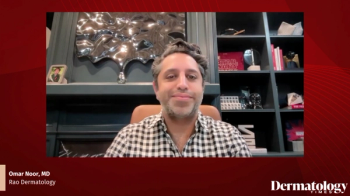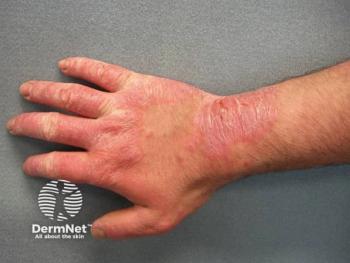
Q&A with Jesse Lewin, MD, FACMS: Celebrating 10 Years of Innovations in Skin Cancer at Mount Sinai

Key Takeaways
- The Waldman Department of Dermatology at Mount Sinai has become a leader in skin cancer care, integrating AI and advanced imaging technologies for improved diagnosis and treatment.
- Community outreach, interdisciplinary collaboration, and state-of-the-art technologies are key strategies for improving early skin cancer detection and patient outcomes at Mount Sinai.
Discover how the Kimberly and Eric J. Waldman Melanoma and Skin Cancer Center at Mount Sinai leads in innovative skin cancer care and research, celebrating a decade of excellence.
This year marks a significant milestone for the Kimberly and Eric J. Waldman Department of Dermatology at the Icahn School of Medicine at Mount Sinai: the 10th anniversary of the Waldman Chair of Dermatology, endowed by Kimberly and Eric J. Waldman. Over the past decade, the department has evolved into a nationally recognized hub for excellence in dermatologic care, research, and education, particularly in the field of skin cancer diagnosis and treatment.
To honor this achievement, Dermatology Times spoke with Jesse Lewin, MD, FACMS, Director of the Kimberly and Eric J. Waldman Melanoma and Skin Cancer Center and Program Director of the Micrographic Surgery & Dermatologic Oncology Fellowship. Lewin shared his perspective on the Center’s growth, the pioneering technologies shaping skin cancer care today, and the bold vision driving the next decade of innovation at Mount Sinai.
Q&A
Dermatology Times: As the Director of the Kimberly and Eric J. Waldman Melanoma and Skin Cancer Center at Mount Sinai, what does this 10th anniversary milestone signify for you and your team? How has the Center evolved over the past decade?
Lewin: The Kimberly and Eric J. Waldman Melanoma and Skin Cancer Center at Mount Sinai continues to thrive and grow. With 96,000 annual visits to Sinai’s dermatology clinic, we are well-positioned to refer our high-risk and skin cancer patients to our expert clinician-scientists at the center. We continue to evolve with the diagnostic technology and AI, as well as with regard to cutting-edge treatment of skin cancer. I have been performing Mohs micrographic surgery with immunohistochemistry for melanoma, offering our patients a tissue-sparing approach with the highest cure rate.
Dermatology Times: What are the most significant skin cancer innovations, technologies, or breakthroughs that have come out of the Center during your time as Director? What are the next frontiers or future areas of focus for the Center?
Lewin: We are performing research on how artificial intelligence can assist in various phases of a patient's skin cancer journey, from diagnosis to counseling on treatment. I have performed research looking at the quality of information patients receive on Mohs micrographic surgery when using large language model-powered search tools, ChatGPT and Google Bard.1 Jonathan Ungar, MD and Nicholas Gulati, MD, PhD, have published on the information obtained from ChatGPT and other AI as well as have studied dermatologist versus AI interpretation of melanocytic lesions.2
The Waldman Center is home to multiple state-of-the-art imaging technologies that assist with early detection of skin cancer. In the future, integrating artificial intelligence with these technologies will allow clinicians to detect skin cancers at a stage that was not previously possible. As one of the few centers with a state-of-the-art Vectra 3D imaging system, we are well-positioned to offer patients early detection and treatment as well as to move the needle on the integration of machine learning. Between the Vectra and our work on non-invasive imaging such as confocal microscopy, we hope to utilize these non-invasive technologies, combined with AI, to improve patient outcomes from the earliest stages of detection, through treatment, and then post-treatment follow-up.
Dermatology Times: In 2024, specialists at the Center treated more than 30,000 cases of skin cancer. What factors do you believe are contributing to the rising incidence of melanoma and skin cancer rates? How are dermatologists at Mount Sinai working to improve early skin cancer detection and care?
Lewin: There are several theories regarding the increased incidence of skin cancer, including depletion of the ozone layer, increased travel throughout the year, as well as other behavioral factors which impact sun protection. At Mount Sinai, our clinicians are involved in community outreach, free skin cancer screenings, and education of other departments at the institution. Our efforts are aimed to increasing early detection, and access to state-of-the art treatment. We also work in an interdisciplinary fashion with our colleagues in medical and radiation oncology, surgical oncology, and head and neck surgery to offer patients the best outcomes.
Lewin has several ongoing studies and research opportunities in the skin cancer space. Some of these include:
- A multi-center study examining outcomes in patients with high-risk cutaneous squamous cell carcinoma
- A retrospective review of basal cell carcinoma in young patients
- Examining the effect of showing Mohs surgery patients photos of reconstructions
- Examining AI use by American College of Mohs Surgery (ACMS) members
- The use of topical timolol versus standard wound care with petrolatum for lower extremity wounds following Mohs surgery, examining time to healing as well as other endpoints.
- Looking at the management of dysplastic nevi by members of the ACMS and the Association of Professors of Dermatology (APD)
For more information, visit the Kimberly and Eric J. Waldman Melanoma and Skin Cancer Center
References
1. Robinson MA, Belzberg M, Thakker S, et al. Assessing the accuracy, usefulness, and readability of artificial-intelligence-generated responses to common dermatologic surgery questions for patient education: A double-blinded comparative study of ChatGPT and Google Bard. J Am Acad Dermatol. 2024;90(5):1078-1080. doi:10.1016/j.jaad.2024.01.037
2. Block BR, Powers CM, Chang A, et al. Diagnostic performance of generative pretrained transformer -4 with vision technology versus board-certified dermatologists: A comparative analysis using dermoscopic and clinical images. JAAD Int. 2024;18:142-144. Published 2024 Nov 25. doi:10.1016/j.jdin.2024.10.006
Newsletter
Like what you’re reading? Subscribe to Dermatology Times for weekly updates on therapies, innovations, and real-world practice tips.



















